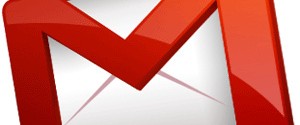![]() A friend of mine recently switched jobs to join a large company. He completed all the typical first-day HR orientation activities, and after lunch received his new email address. The address took the first seven letters of his last name, Kraftman, and dutifully appended the first letter of his first name, A — to create an email address: “kraftmaa@company.com”.
A friend of mine recently switched jobs to join a large company. He completed all the typical first-day HR orientation activities, and after lunch received his new email address. The address took the first seven letters of his last name, Kraftman, and dutifully appended the first letter of his first name, A — to create an email address: “kraftmaa@company.com”.
Needless to say, he was frustrated. Most humans will read that email address as a typo, even if they know his full name. But despite numerous calls, IT wouldn’t budge — he’s stuck with it for the foreseeable future. Which made me think about the role of rigid enterprise email conventions in a digital free-for-all world.
Since the 1990s when enterprise email first came into widespread use, IT organizations began to standardize conventions for the local parts, the name section that appears before the @ symbol and the closing domain part. Webmasters and other early adopters may have sneaked in their own clever short names and the CEO likely got to choose, but your average employee received a standard formula like:
- first_last@company.com
- first.last@company.com
- firstinitiallast@company.com
The idea behind the convention was clearly to create a predictable system: easy for IT to implement and easy for external people to infer. But as the consumerization of IT took hold, by 2009 people’s work email became for many the least sophisticated thing they did on the internet instead of the most. IT constraints start to chafe when you are arriving in the workplace with a fully-formed online identity, and your email address conflicts with the ways you are already known.
Here’s an example. Let’s say your passport reads Mary Evans Schafler, but from birth you’ve gone by Molly. So you’ve snagged facebook.com/mollyschafler, @mollyschafler on Twitter, mollyschafler on Instagram, and linkedin.com/in/mollyschafler — and then you arrive in your new job. Suddenly, you’re mary_schafler@company.com. This new handle is not so easy for others to infer — and just think of all the Michaels who are Mikes, the Jameses who are Jims, and the Eduardos who are Eddies. Even if your enterprise-issue email address doesn’t look like a typo like unfortunate kraftmaa@company.com, you can end up with an identity that’s not a fit.
What’s the answer? IT doesn’t want the complexity of managing multiple conventions, and there’s something to be said for the neatness of one-size-fits-all data. And you could argue most people type an email address only once, after which the magic of Gmail or Outlook kicks in and the address becomes a contact. But as more millennials enter the enterprise, employees may feel strongly about having an email identity that jibes with their already ubiquitous online self. Think of it like having your name on your business cards — not a lot of companies will insist that a Christopher use his full name instead of Chris.
With mobile technology, enterprise employees voted with their feet. Employees brought in handhelds and tablets to thwart firewalls and perform work-related transactions until programs like bring-your-own-device (BYOD) emerged. I wonder if email will be the same: eager to retain employee communication, companies may flex to allow employees to choose their own username — just as they do everywhere else on the web.
Photo credit: AJC1
